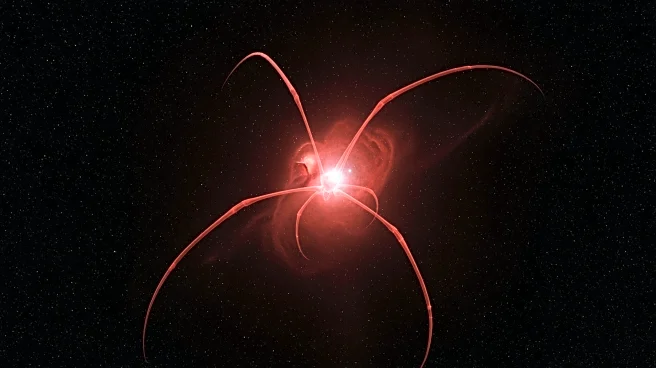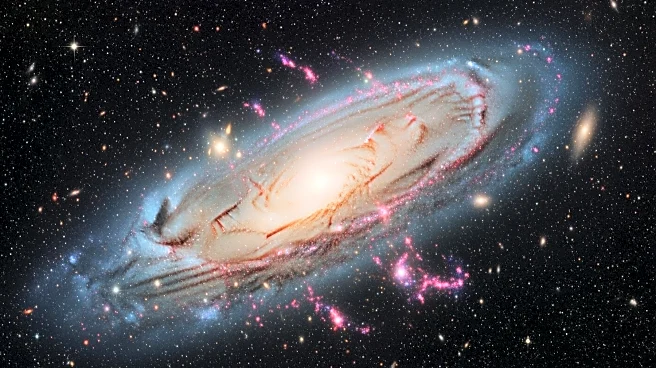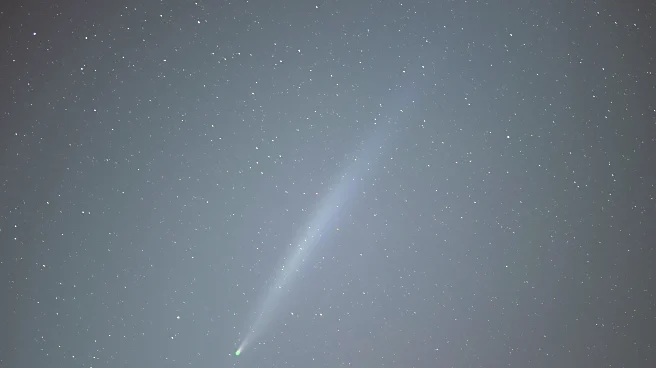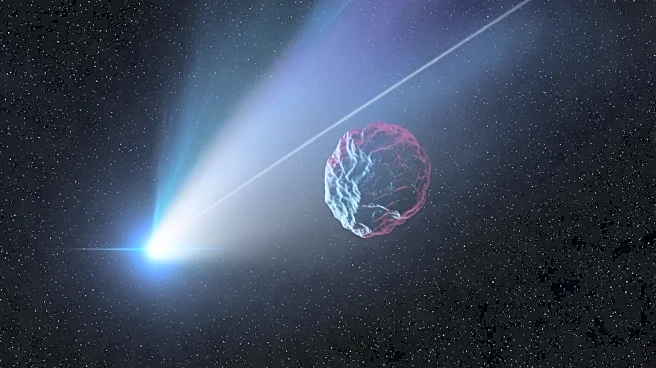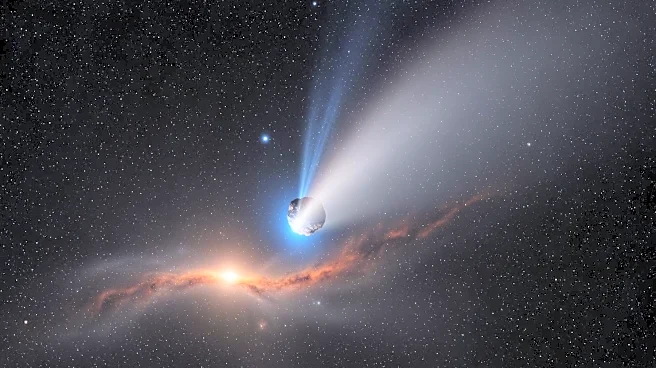What's Happening?
Astronomers from the International Centre of Radio Astronomy Research (ICRAR) have released the largest low-frequency radio color image of the Milky Way, offering unprecedented insights into the galaxy's
structure. This image, created by Ph.D. student Silvia Mantovanini, was developed using data from the Murchison Widefield Array (MWA) telescope in Western Australia. The surveys, known as GLEAM and GLEAM-X, were conducted over several years, providing twice the resolution and ten times the sensitivity compared to previous images. The new image allows astronomers to explore the birth, evolution, and death of stars, revealing supernova remnants and stellar nurseries with greater clarity.
Why It's Important?
This development is significant for the field of astronomy as it provides a more detailed understanding of the Milky Way's structure and the lifecycle of stars. The enhanced resolution and sensitivity of the image enable researchers to identify and study supernova remnants and pulsars, which are crucial for understanding stellar evolution. The findings could lead to new discoveries about the formation and interaction of celestial objects within the galaxy. This advancement also sets the stage for future research with the upcoming SKA Observatory's SKA-Low telescope, which promises even greater capabilities.
What's Next?
The release of this image marks a milestone in radio astronomy, paving the way for further exploration of the Milky Way. Researchers will continue to analyze the data to uncover more about the galaxy's structure and the behavior of pulsars. The completion of the SKA-Low telescope in the next decade will further enhance the ability to study the galaxy with improved sensitivity and resolution, potentially leading to groundbreaking discoveries in the field.
Beyond the Headlines
The image not only advances scientific understanding but also highlights the importance of international collaboration in astronomy. The use of supercomputers and advanced telescopes demonstrates the technological progress in the field, emphasizing the role of innovation in expanding human knowledge of the universe. This project also underscores the significance of preserving and utilizing indigenous lands for scientific research, as seen with the MWA telescope's location on Wajarri Yamaji Country.



